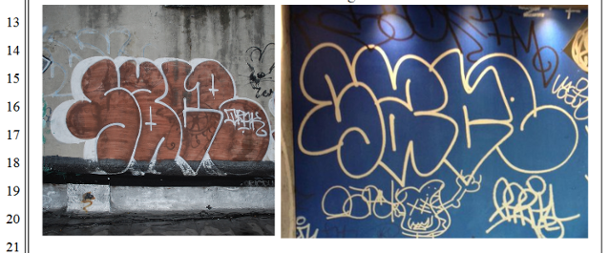McDonald’s recently prevailed on personal jurisdiction grounds in a closely-watched case in California about the use of street art as décor for restaurants in the United Kingdom, but the issue has quickly arisen again. As part of what the fast-food giant has clearly decided is a winning branding strategy, the chain’s use of graffiti from New York has now brought the threat of litigation from the so-called Bushwick Collective. Where any such lawsuit gets filed will have a great deal to do with what happens next.
Back in December, McDonald’s was sued by the estate of the late artist Dashiell Snow, known as “Dash.” The Dash Complaint depicted Snow as a contemporary artist, whose “street cred” was an essential part of his image—with which the appearance of his art in something as mainstream as McDonald’s would be at odds. The case tracked the theory that survived dismissal in the Tierney v. Moschino case involving street artist “Rime”—namely, that identifiers in the images themselves violate the “copyright management information” provisions of the Digital Millennium Copyright Act, 17 U.S.C. § 1202 (though the Snow estate alleged that the presence of his signature creates an unwarranted association between him and McDonald’s.).

The Snow street art and the McDonald’s décor, as depicted in the Complaint
McDonald’s never had to litigate the substance of the copyright or trademark claims, however, because it moved to dismiss for lack of personal jurisdiction. A subject long the bête noire of law students, personal jurisdiction encompasses the concept of when a particular defendant can be sued in a particular court. It can be either specific—the claims concern something that affects the forum state specifically, or general—the defendant itself can be sued in that place because of its general activity. In other words, how far away does the power of the court extend? The Supreme Court curtailed the analysis of that doctrine substantially a few years ago in Daimler AG v. Bauman, 134 S.Ct. 746, 760 (2014). Where for years courts had wrestled with how “continuous and systematic” a defendant’s contacts had to be with the forum court, Daimler simplified the analysis to ask whether the defendant can be considered “at home” there (ironically for his case, for many years the leading case on the topic involved Burger King).
The Dash case involved allegations in a California court against McDonald’s, a Delaware corporation headquartered in Illinois with a California subsidiary, about conduct of another subsidiary in the United Kingdom. The U.S. District Court in Los Angeles concluded that there was no specific jurisdiction. Neither the McDonald’s parent nor its California subsidiary had directed any activity in California, they had instead directed activity in the United Kingdom. Further, the court held that under the Daimler test, McDonald’s (either Delaware or UK) could not be considered “at home” in California. This may seem counterintuitive, because surely McDonald’s is indeed everywhere within the United States, but it is not as dramatic as it first seems. If there were an event leading to claims that happened in a McDonald’s in the United States, specific jurisdiction would kick in and the parent and the local subsidiary could almost certainly be sued. In any event, the case was dismissed and Snow’s estate did not appeal within thirty days of the judgment, so the case is over unless the estate pursues litigation in the UK (a jurisdictional dismissal like this is not an adjudication on the merits).
McDonald’s clearly sees value in street art as a theme for its restaurants, so it is not surprising that another group of street artists is taking issue with that approach. The artists’ work appears in a video that McDonald’s is using to promote its new line of bagels in the Netherlands. Artists Virus, NDA, Atomik, Don Rimx, Beau Stanton and Himbad complained via their attorney that McDonald’s actions infringed their copyright. This case, like many in recent years, assumes the ability to protect street art or graffiti through copyright, which many decisions have implicitly assumed but which remains a little unsettled as to whether the existence of the property owner’s permission in the firs place is a prerequisite for protection.
McDonald’s is surely being careful here. Where the Dash case used California street art in the UK, now it is allegedly using New York street art in the Netherlands. If the artists brought suit in New York, they would presumably face the same argument that McDonald’s made successfully in California. Whether that would convince them to pursue the Dutch McDonald’s is another matter. Once again, however, these developments prove that the intersection of street art and big business are not going away.



